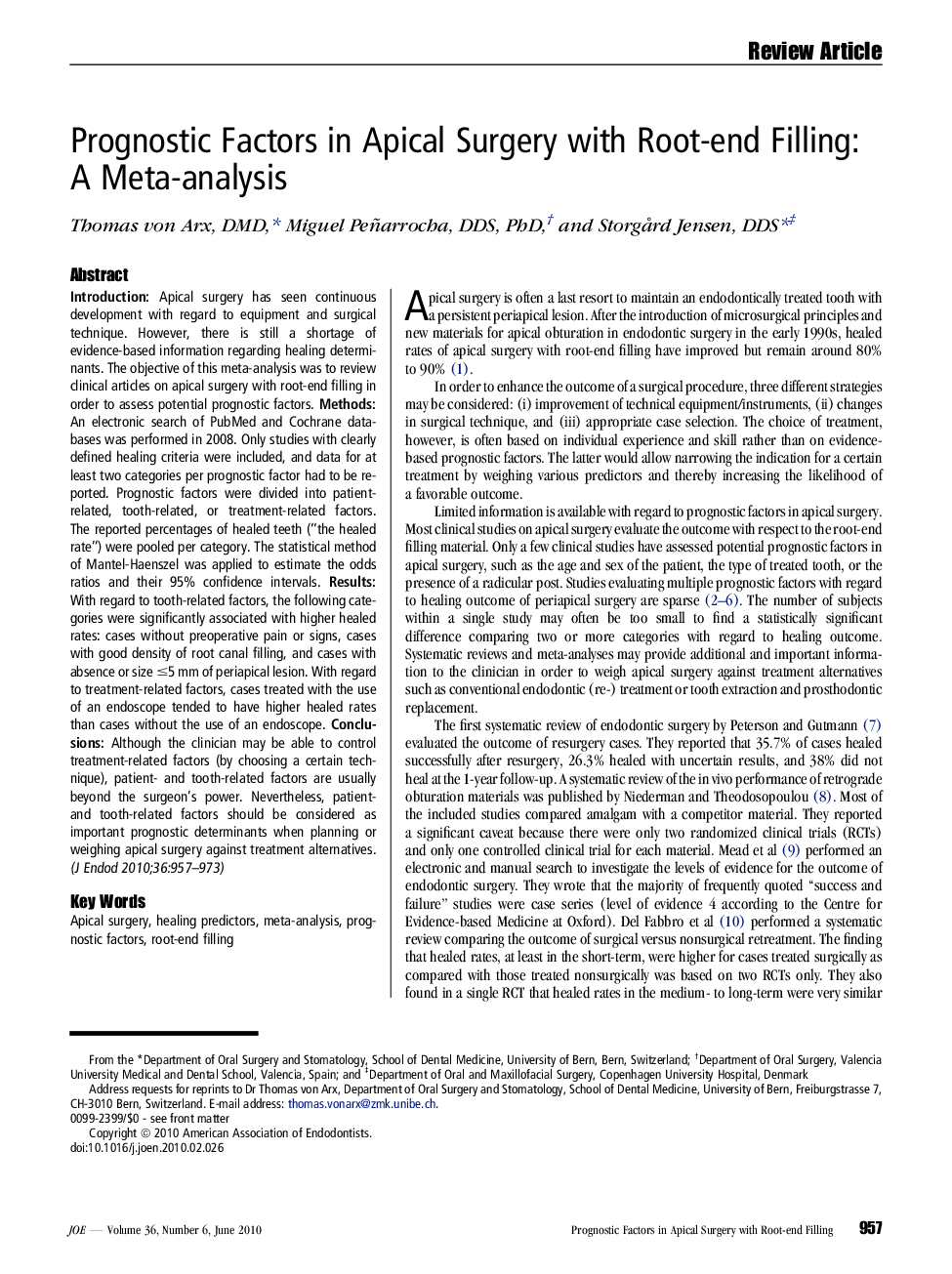| Article ID | Journal | Published Year | Pages | File Type |
|---|---|---|---|---|
| 3150591 | Journal of Endodontics | 2010 | 17 Pages |
IntroductionApical surgery has seen continuous development with regard to equipment and surgical technique. However, there is still a shortage of evidence-based information regarding healing determinants. The objective of this meta-analysis was to review clinical articles on apical surgery with root-end filling in order to assess potential prognostic factors.MethodsAn electronic search of PubMed and Cochrane databases was performed in 2008. Only studies with clearly defined healing criteria were included, and data for at least two categories per prognostic factor had to be reported. Prognostic factors were divided into patient-related, tooth-related, or treatment-related factors. The reported percentages of healed teeth (“the healed rate”) were pooled per category. The statistical method of Mantel-Haenszel was applied to estimate the odds ratios and their 95% confidence intervals.ResultsWith regard to tooth-related factors, the following categories were significantly associated with higher healed rates: cases without preoperative pain or signs, cases with good density of root canal filling, and cases with absence or size ≤5 mm of periapical lesion. With regard to treatment-related factors, cases treated with the use of an endoscope tended to have higher healed rates than cases without the use of an endoscope.ConclusionsAlthough the clinician may be able to control treatment-related factors (by choosing a certain technique), patient- and tooth-related factors are usually beyond the surgeon's power. Nevertheless, patient- and tooth-related factors should be considered as important prognostic determinants when planning or weighing apical surgery against treatment alternatives.
